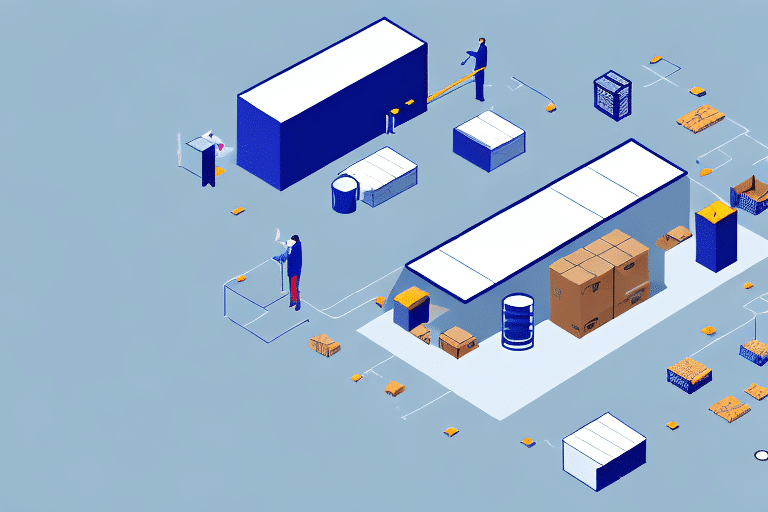Understanding Fill Rate by Volume in E-Commerce Operations
In the competitive landscape of e-commerce, measuring fill rate by volume is essential for assessing an organization's operational success. The fill rate, or order fill rate, represents the percentage of customer orders fulfilled immediately from available inventory. This article explores the fundamentals of fill rate measurement, its significance in online retail, and methodologies to calculate and optimize volume-based fill rates for your business.
The Fundamentals of Fill Rate Measurement in E-Commerce
Fill rate measurement is a pivotal component of logistics management within e-commerce operations. It involves calculating the percentage of total orders that are fulfilled immediately from the inventory at the time of order placement. A high fill rate indicates a company's capability to meet customer demand promptly and efficiently, leading to enhanced customer satisfaction, increased loyalty, and repeat business.
However, achieving and maintaining a high fill rate presents challenges, particularly during peak seasons or unexpected demand surges. Issues such as inaccurate inventory management, delayed shipments, and insufficient warehouse space can negatively impact fill rates. To address these challenges, it is crucial for businesses to continuously monitor and analyze fill rate data, identifying areas for improvement and implementing strategies to optimize their logistics operations.
The Significance of Fill Rate in Online Retail
In the realm of e-commerce, customers expect a seamless shopping experience characterized by swift and accurate order fulfillment. Maintaining a high fill rate is essential for meeting these expectations. Low fill rates can result in lost sales, missed opportunities, and negative customer feedback, which can tarnish a brand’s reputation.
Improving fill rates can be achieved through several strategies:
- Inventory Management Systems: Implementing robust inventory management systems that accurately track stock levels and predict demand helps prevent stockouts and overstocking.
- Reliable Suppliers and Carriers: Partnering with dependable suppliers and shipping carriers ensures timely and precise delivery of products.
- Accurate Product Information: Providing detailed and accurate product descriptions reduces the likelihood of returns and cancellations, thereby enhancing fill rates.
According to a Investopedia report, companies that excel in inventory management experience up to a 30% increase in fill rates, highlighting the importance of this metric in e-commerce success.
Calculating Volume-Based Fill Rate for Your Business
Volume-based fill rate is a precise metric for assessing how effectively a business meets customer demand. The calculation involves dividing the number of units shipped by the total number of units ordered, resulting in a percentage that reflects the proportion of orders fulfilled from existing inventory at the time of purchase.
To accurately calculate this metric, consider the following formula:
Volume-Based Fill Rate (%) = (Units Shipped / Units Ordered) × 100It is also important to factor in lead time—the duration between placing an order and receiving the goods from the supplier. Long lead times can impact fill rates, even with adequate inventory levels. Therefore, incorporating lead time into your calculations provides a more comprehensive understanding of your fulfillment capabilities.
Regularly tracking and analyzing volume-based fill rate metrics allows businesses to identify inefficiencies and adjust inventory levels proactively to meet customer demands effectively.
Overcoming Common Challenges to Achieve High Fill Rates
Achieving high fill rates in e-commerce operations involves navigating several challenges, including:
- Inventory Management: Fluctuating product demand can make it difficult to maintain accurate stock levels.
- Order Picking and Packing: Errors in order fulfillment can lead to shipping delays and dissatisfied customers.
- Shipping Logistics: Efficient logistics are crucial for timely delivery and maintaining high fill rates.
To address these challenges, businesses can implement advanced inventory management systems that offer real-time tracking of inventory levels, enabling proactive adjustments to stock. Utilizing barcode scanning systems can enhance the accuracy of order picking and packing, reducing errors and improving fulfillment speed.
According to a study by Supply Chain Digital, businesses that adopt automated inventory and order processing systems see a 25% improvement in fill rates.
The Impact of Fill Rate on Customer Satisfaction and Retention
The fill rate directly influences customer satisfaction and retention. Accurate and swift order fulfillment increases the likelihood of repeat purchases and positive customer reviews. Conversely, low fill rates can result in incomplete or delayed orders, leading to customer dissatisfaction and increased return rates.
Research by Harvard Business Review indicates that companies with high fill rates experience a 20% higher customer retention rate compared to those with lower fill rates.
To enhance customer satisfaction, businesses should prioritize order accuracy and fulfillment speed, ensuring that customers receive their orders as expected. Implementing customer feedback mechanisms can also help identify fulfillment issues and areas for improvement.
Best Practices for Enhancing Fill Rates in E-Commerce
Adopting best practices can significantly improve fill rates in e-commerce operations:
- Automate Key Processes: Automating inventory management, order processing, and dispatch systems reduces errors and accelerates fulfillment times.
- Real-Time Inventory Tracking: Implementing systems that provide real-time visibility into inventory levels enables timely stock replenishment and prevents stockouts.
- Diverse Shipping Options: Offering multiple shipping choices, such as expedited shipping, same-day delivery, and in-store pickup, caters to varying customer preferences and enhances satisfaction.
According to a report by McKinsey & Company, businesses that integrate automation and real-time tracking into their operations can achieve up to a 35% improvement in fill rates.
Leveraging Technology to Optimize Volume-Based Fill Rates
Advanced technologies like artificial intelligence (AI) and machine learning (ML) play a crucial role in optimizing fill rates. Predictive analytics can forecast future demand, allowing businesses to adjust inventory levels proactively. AI-powered solutions streamline logistics, enhance inventory accuracy, and improve overall fulfillment efficiency.
Real-time data analytics enable businesses to monitor fill rates continuously, quickly identifying and addressing any issues that may arise. Additionally, technology facilitates better communication and collaboration with suppliers, ensuring that inventory levels are aligned with customer demand.
Innovations such as blockchain technology also offer enhanced traceability and fraud reduction in e-commerce operations, further supporting reliable and efficient fulfillment processes.
Key Performance Indicators (KPIs) for Effective Fill Rate Management
Tracking specific KPIs is essential for managing and improving fill rates effectively:
- Order Cycle Time: The total time from order placement to delivery.
- Shipping and Handling Time: The duration required to process and dispatch orders.
- Transit Time: The time taken for shipments to reach customers.
- Stock Levels: Monitoring inventory quantities to prevent stockouts and overstocking.
- Backorder Percentage: The rate of orders that cannot be fulfilled immediately.
- Order Picking Accuracy: The percentage of orders picked correctly without errors.
By regularly monitoring these KPIs, businesses can identify bottlenecks and implement targeted strategies to enhance fill rates and overall fulfillment performance.
Case Studies: Successful Volume-Based Fill Rate Strategies
Several leading companies have effectively implemented volume-based fill rate strategies to enhance their operations:
Amazon
Amazon utilizes advanced AI and machine learning algorithms to optimize its inventory management system. This technology enables accurate demand forecasting and efficient stock allocation, resulting in high fill rates and exceptional customer satisfaction.
Walmart
Walmart's Online Grocery Pickup (OGP) system allows customers to place grocery orders online and collect them from nearby stores. This approach not only optimizes logistics but also ensures high fill rates by leveraging existing store inventories.
Target
Target employs the "Ship from Store" model, which fulfills online orders from physical store locations. This strategy reduces shipping times and improves inventory utilization, leading to higher fill rates and enhanced customer experience.
Future Trends and Innovations in Fill Rate Optimization
The future of e-commerce fulfillment lies in the continued adoption of cutting-edge technologies and innovative strategies. Emerging trends include the use of drones and autonomous vehicles for faster and more efficient deliveries, as well as the integration of blockchain for improved supply chain transparency and security.
As technology evolves, businesses will have access to more sophisticated tools for measuring and optimizing fill rates, enabling them to meet increasing customer expectations and maintain competitive advantage in the e-commerce market.
In conclusion, measuring and optimizing fill rate by volume is vital for e-commerce success. By implementing best practices, leveraging advanced technologies, and continuously monitoring key performance indicators, businesses can enhance their fulfillment processes, increase customer satisfaction, and drive sustained growth.






















